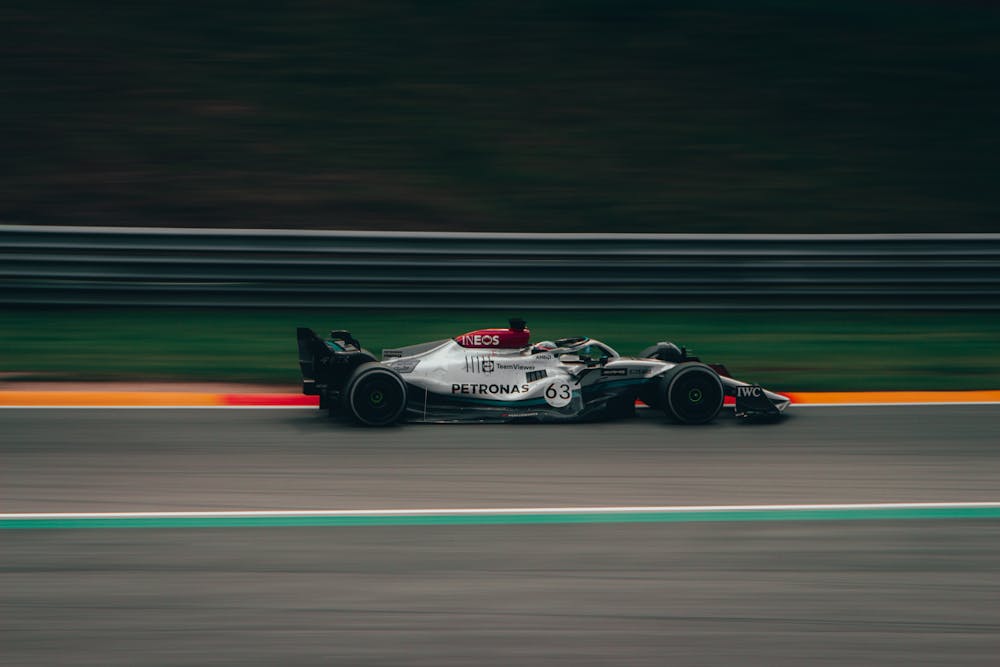The thrilling world of motorsport offers a spectacular array of races, but few categories garner as much attention and excitement as Formula 1 (F1) and Formula 2 (F2). While both racing series are celebrated for their high-speed action and competitive spirit, they cater to different levels of the racing hierarchy, each with its unique characteristics and challenges. This article delves into the core aspects that set Formula 1 and Formula 2 apart, shedding light on their technical specifications, race formats, and their distinctive roles in the motorsport world. By comparing these two prestigious categories, we aim to provide a clearer understanding of what makes each tick and how they contribute to the enthralling spectacle of auto racing.
The Basics of Formula 1 and Formula 2: Understanding the Fundamentals
The distinction between Formula 1 and Formula 2 extends beyond mere nomenclature; it lies at the heart of their respective purposes and positions within the motorsport ecosystem. Formula 1, often seen as the pinnacle of auto racing, showcases the zenith of technological innovation, driver skill, and global prestige. In contrast, Formula 2 serves as a crucial stepping stone for drivers aspiring to reach the heights of Formula 1, emphasizing driver development and a more level playing field.
At the core, both categories adhere to a single-seater, open-wheel racing format, yet they diverge significantly in terms of technical regulations, financial investment, and audience reach. Formula 1 cars are at the forefront of automotive technology, featuring hybrid power units and advanced aerodynamics, whereas Formula 2 vehicles are designed to be more uniform, minimizing variables to highlight driver talent.
The Technical Divide: Analyzing the Cars of Formula 1 and Formula 2
Diving deeper into the mechanical world, the technical differences between Formula 1 and Formula 2 cars are profound and pivotal in defining their racing experience. F1 cars are equipped with cutting-edge technology, boasting hybrid engines that deliver immense power, sophisticated energy recovery systems, and aerodynamics that push the boundaries of physics. Each team in Formula 1 has the freedom to develop its chassis and select its power unit, leading to a diverse grid where engineering prowess is just as crucial as driving skill.
Conversely, all Formula 2 cars are built to the same specifications, with teams using identical chassis, engines, and tires. This homogeneity ensures that the focus remains on the drivers’ ability to extract the maximum performance from their cars, rather than on the technological superiority of their machines. The fixed setup in Formula 2 also serves as an ideal training ground for drivers, preparing them for the varied challenges of Formula 1 while maintaining a competitive and exciting racing environment.
Competitive Edges: The Racing Formats of F1 and F2 Compared
The racing formats of Formula 1 and Formula 2 are designed to test the mettle of drivers and teams under different conditions, reflecting the unique objectives and audiences of each series. In Formula 1, the race weekend is structured around three practice sessions, a qualifying session, and the race itself. This format is designed to provide teams and drivers with ample opportunity to fine-tune their strategies and car settings across different conditions, culminating in a high-stakes race that draws millions of viewers worldwide.
Formula 2 adopts a different approach, featuring two races per weekend: a Feature race and a Sprint race. The Feature race includes a mandatory pit stop, introducing a strategic element that prepares drivers for the complex race strategies they will encounter in Formula 1. The Sprint race, on the other hand, is shorter and does not require pit stops, emphasizing outright pace and overtaking skills. Points are awarded in both races, along with additional points for pole position and fastest laps, creating a dynamic championship battle that rewards consistency as well as brilliance.
The contrast in formats between the two series not only provides varied entertainment for fans but also equips rising stars with a broad range of experiences, from managing tires and fuel to executing overtakes and defending positions under pressure.
Future Stars: The Role of Formula 2 in Developing F1 Talent
Formula 2 is not just a racing category; it’s a crucial talent pipeline for Formula 1, with a proven track record of preparing drivers for the pinnacle of motorsport. The series has become a breeding ground for future F1 stars, offering a platform where young drivers can showcase their skills against a backdrop of equal machinery and intense competition.
- Direct Pathway to F1: Many F1 teams closely monitor F2 to identify promising talent, often selecting drivers from this pool for test and reserve roles, which can lead to full-time F1 seats.
- Skill Development: The competitive environment of F2 hones a driver’s racecraft, adaptability, and mental resilience, key attributes for success in the high-pressure world of Formula 1.
- Showcasing Talent: With all drivers competing in identical cars, F2 emphasizes driver skill over technological advantage, allowing emerging talents to stand out based on their performance alone.
The transition from Formula 2 to Formula 1 is a significant leap, involving not just faster cars but also greater technical complexity, media scrutiny, and commercial responsibilities. Nevertheless, the experience gained in F2 is invaluable, providing a robust foundation upon which drivers can build their F1 careers.
Through examining the various facets of these two captivating racing series, it becomes evident that while they may share some superficial similarities, their distinct purposes, structures, and roles within the motorsport hierarchy underscore the rich diversity and depth of the racing world. As fans, we are fortunate to witness this intricate ballet of speed and strategy, where today’s F2 prodigies become tomorrow’s F1 legends.









